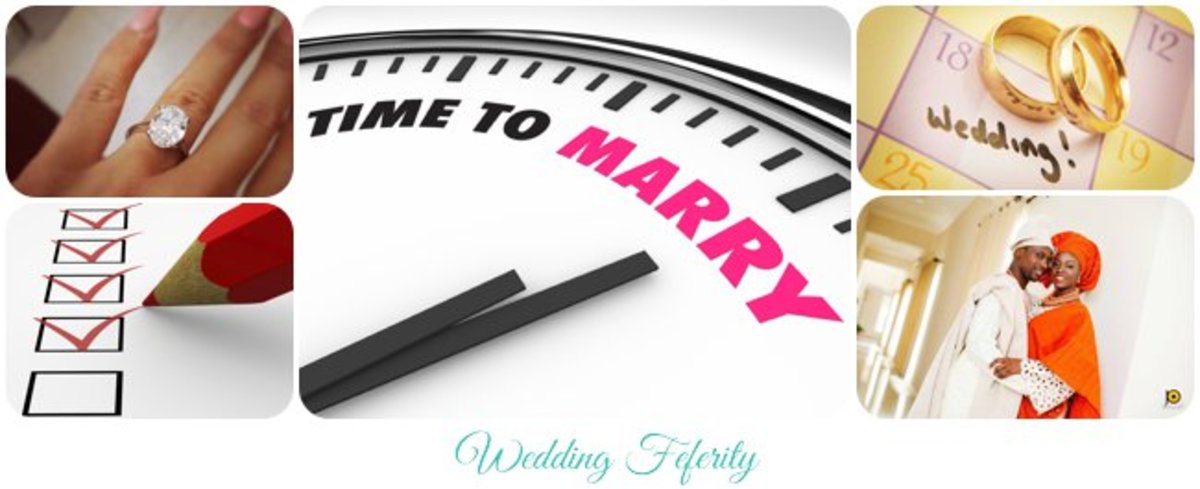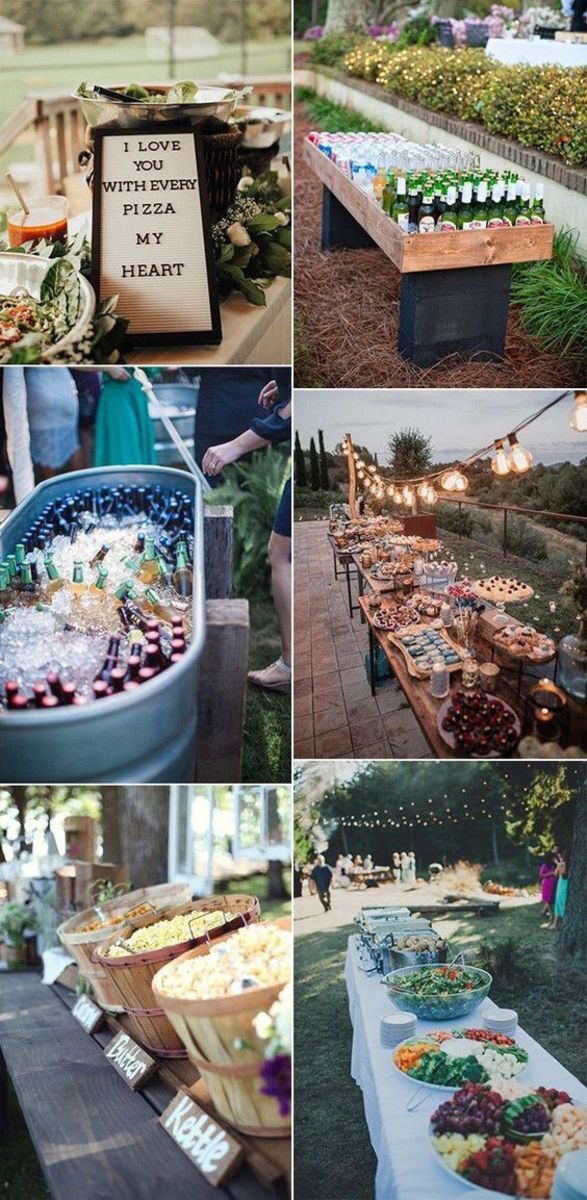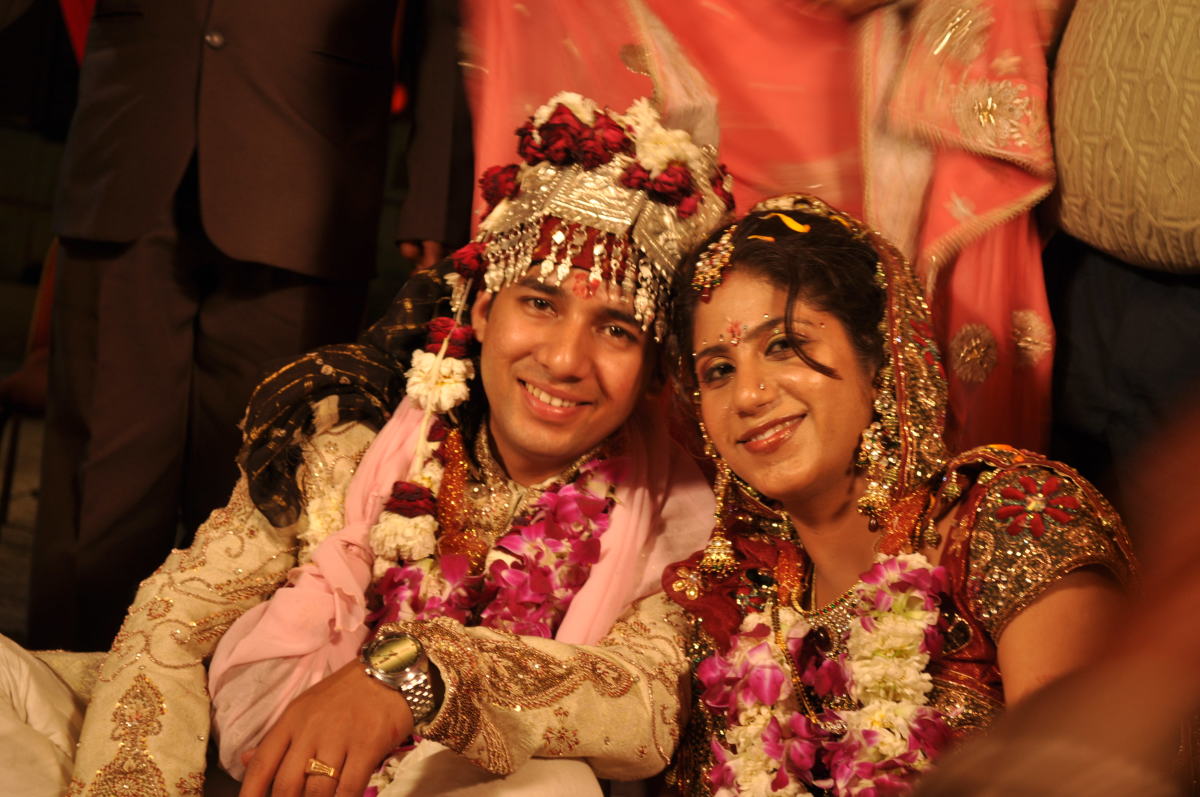Origins of Wedding Customs, Traditions, and Superstitions
Any couple planning a wedding is familiar with our culture's wedding traditions. White dress? Check. Veil? Check. Bridesmaids? Check. But as you mark things off of your to-do list in your planner, did you ever stop to consider why you are including certain things in your wedding? Many of the elements that we take for granted in a wedding have their origins in ancient customs and superstitions.
A circular wedding band has been around as long as there have been marriages. The circle is a perfect symbol for a marriage because it represents eternity, and therefore a love that goes on forever. Of course, it is also a way to symbolize to the community that a person is "off the market", so to speak
Claddagh Ring
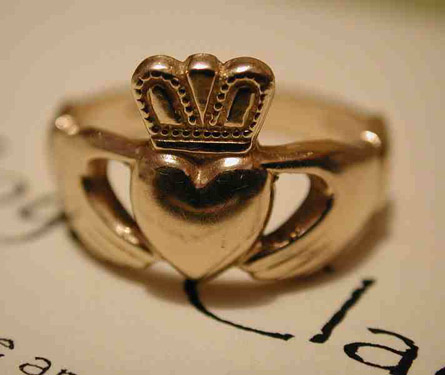
A variation on this is the Irish tradition of the Claddagh ring. The Claddagh consists of three symbolic parts: a heart for love, a pair of hands for friendship, and a crown for loyalty. The way in which it is worn indicates the availability of the wearer. Worn on the left hand with the crown facing the wrist means that the person is spoken for, but not yet married. Once marriage vows have been exchanged, the ring is switched so that the crown points to the fingertip.
The ring finger of the left hand was once believed to be linked directly to the heart, which is why it was chosen as the finger to be graced with the engagement ring and wedding band. This is also why the wedding band is worn on the inside of the engagement ring, because it puts the band "closer to the heart". Speaking of engagement rings, that particular custom dates back to either Roman or Egyptian times. Diamonds were occasionally used as far back as the Romans, who revered them for their perceived supernatural powers, not their beauty (a diamond does not look like much until it is faceted and polished to bring out the sparkle within). The prevalence of the diamond as the favorite gem for engagement rings did not take off until the mid 20th Century in America (based on a very persuasive advertising campaign by DeBeers!). In many countries today, colored gems and birthstones are still more common than diamonds to signify betrothal.
Akoya Cultured Pearls
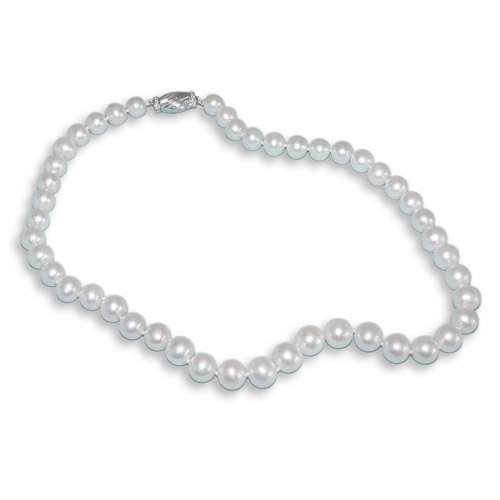
Another precious material with a strong bridal tradition is the pearl. Once again, we have the Romans to thank for this. Pearls in ancient Rome demonstrated the wealth and class of the wearer. The ancient Greeks believed that if a bride wore pearls, she would have a happy marriage with few tears. Pearls were not strictly worn by women in olden days, by the way. Medieval knights thought that pearls offered protection from injury in battle. Pearls have always been strongly associated with the aristocracy, and were worn by Queen Elizabeth II, as well as Jacqueline Kennedy (who is as close as were come to American royalty). As methods of culturing pearls have evolved, pearl wedding jewelry has become available and affordable to brides of less lofty means, as well.
Queen Victoria and Prince Albert
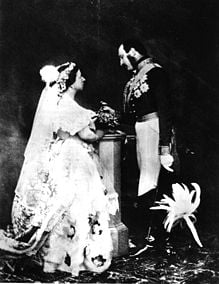
The white wedding gown is probably the best known American wedding tradition. Although it is hard to imagine a time when a wedding did not mean a woman in an exquisite white dress, this has not always been the case. It used to be that brides wore their best dress, in whatever color it happened to be. (Or they chose a color based on an elaborate system of symbolism.) All that changed, however, when Queen Victoria chose white for her wedding gown. The white wedding gown soared in popularity, and also came to symbolize virtues such as purity and innocence. The notion that a wedding gown should be white has become so ingrained in the fabric of our society that it is not at all unusual today to see even pregnant or second time brides wear white. (And no, it is not polite to snicker at them!) The purity and virginity of the bride also gave rise to another ritual, thankfully discarded in most countries today, which was the public display of the marital bedsheets.
After a bride finds the wedding gown of her dreams, the next step is to choose the perfect veil to compliment her dress. For many young women, the question is whether she prefers the look of a veil or not, but historically, the veiling of a bride had great superstitions and religious significance. Many of our current wedding customs are based on ancient beliefs that a bride was particularly attractive to evil spirits. Thus, many rituals arose in an effort to protect her. One of these was the bridal veil, which was designed to shield her from evil. (This is also why brides had bridesmaids. Her friends would dress in garb and veils identical to the bride's, so that the spirits could not identify her.)
Another reason why brides wore veils was to hide her face from her fiancé in the days when arranged marriages were common. The wedding day was often the first time that the two participants met, and the idea was that the groom not be allowed to see the bride until after the wedding, in case he did not find her pretty. (Once the knot was tied, it was too late for him to back out of an arrangement that would have been financially important to his family.) This is also the origin of keeping the bride and groom apart on the day of the ceremony.
Because many wedding customs have their basis in superstitions, the concept of good or bad luck is behind quite a few of our traditions. Some things that are considered lucky: seeing a chimney sweep on your wedding day (in England, it is popular to hire one to ensure good luck),lambs, toads, and rainbows. Unlucky omens include: a new wife tripping as she enters her home (this is why the groom carries her over the threshold), seeing a nun or a monk on the wedding day (because they represent chastity and poverty), open graves, pigs, and hearing a rooster crow after dawn. The bride is also supposed to refrain from seeing herself fully dressed in her bridal ensemble (it is like tempting fate), so it is customary to leave off one article, like a glove or a necklace) until after the last peek in the mirror before heading to the church.
Jumping The Broom At Church
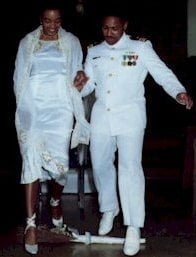
Jumping The Broom
An important African-American ritual also has at least partial roots in superstitions. “Jumping of the Broom” is done at the end of a wedding ceremony, and it is a tradition brought to the United States by slaves from West Africa. To the West Africans, the broom was thought to offer protection from malevolent spirits. It also denoted sweeping away negative parts of the past, making it the ideal symbol for the start of a new life. Because American slaves were forbidden to marry, the jumping of the broom became a way to formalize a union between a man and a woman. Within the slave community, the couple was considered to be legally wed.
Why are those bells ringing?
Noise was also believed to drive off evil spirits, which is why we ring the church bells at a wedding. This is also the reason that noisy cans are tied to the newlywed's bumper (although these days the people doing the tying of cans probably just think that it's a funny prank), and that glasses are clinked at the wedding reception (with the added bonus of the clinking being a call for smooching).
Now You Must Kiss The Bride
Speaking of smooching, here is one more wedding tradition for which we can thank the Romans: the ceremonial kiss at the end of a marriage ceremony. Under Roman law, a kiss was legally binding. Therefore, when the newlyweds share their kiss on the altar, what they are really doing is sealing the deal. Sorry to be so unromantic!
It is great fun to know the origins of the rituals that you choose to include in your wedding. Of course, it is not necessary to believe in the superstition or ancient belief from which the custom originated. As these customs were handed down through the ages they have become an important part of our own American wedding traditions, which for most couples is reason enough to continue to use them. After all, weddings are by their nature nostalgic events, and our customs, rituals, and traditions enhance the feeling of being linked to our families and communities.



